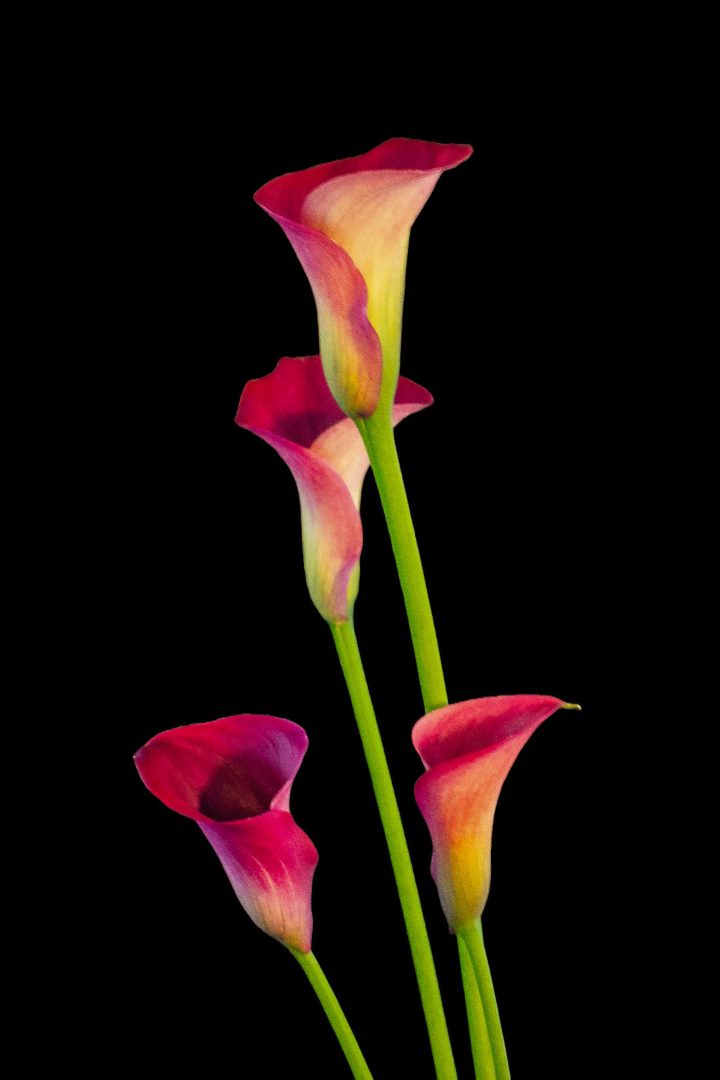Your cart is currently empty!
Calla Lily Orchids: An In-Depth Guide

Introduction
Calla lilies, renowned for their elegant trumpet-shaped blooms, are commonly mistaken for orchids, but they belong to the Araceae family. Despite their contrasting familial lineages, both calla lilies and orchids share a captivating allure, making them coveted additions to gardens and floral arrangements.
Botanical Characteristics
Calla Lilies (Zantedeschia spp.)
- Origin: South Africa
- Growth Habit: Herbaceous perennial
- Height: 30-90 cm (1-3 ft)
- Foliage: Heart-shaped or arrow-shaped, dark green leaves
- Blooms: Trumpet-shaped spathes (modified leaves) in a wide range of colors, including white, yellow, pink, and purple
- Blooming Period: Late spring to mid-summer
Orchids (Orchidaceae)
- Origin: Worldwide
- Growth Habit: Epiphytes (tree-dwellers), lithophytes (rock-dwellers), or terrestrials (ground-dwellers)
- Height: Varies widely by species
- Foliage: Diverse, ranging from thick and leathery to thin and grass-like
- Blooms: Exhibiting an extraordinary array of shapes, colors, and sizes, often featuring complex structures
- Blooming Period: Varies by species
Cultural Requirements
Calla Lilies:
- Light: Partial to full shade
- Soil: Moist, well-drained, organic-rich
- Watering: Keep soil consistently moist, especially during active growth and flowering
- Fertilizing: Fertilize monthly with a balanced liquid fertilizer
- Hardiness: USDA Zones 8-10; requires protection from frost in colder climates
Orchids:
Cultural requirements vary significantly among orchid species, but general guidelines include:
- Light: Most orchids prefer bright, indirect light
- Soil or Growing Medium: Use a well-draining orchid potting mix
- Watering: Water thoroughly when the potting mix becomes slightly dry
- Fertilizing: Fertilize monthly with an orchid-specific fertilizer
- Humidity: Maintain high humidity levels, especially for tropical species
Propagation
Calla Lilies
- Division: Divide dormant plants in early spring
- Seeds: Can be slow and unreliable
Orchids
- Keikis: Small plantlets that grow on flower spikes or at the base of the plant
- Division: Separate large clumps with multiple growth points
- Tissue Culture: Specialized technique used for producing大量
Uses
Calla lilies and orchids are both versatile and widely used in:
- Landscaping: As attractive border plants or ground covers
- Floral Arrangements: For weddings, special occasions, and home decor
- Containers: Grown in pots or hanging baskets
Tips for Success
Calla Lilies:
- Plant the corms with the pointed end up
- Mulch around the plants to retain moisture
- Deadhead spent flowers to prolong blooming
- Allow the foliage to die back naturally after flowering
Orchids:
- Research the specific cultural requirements of your orchid species
- Provide adequate light, humidity, and potting mix
- Water consistently and fertilize regularly
- Repot when the potting mix breaks down or becomes compacted
Troubleshooting
Calla Lilies:
- Yellowing leaves: Overwatering or nutrient deficiency
- Brown leaf tips: Underwatering
- No blooms: Insufficient sunlight or lack of fertilization
Orchids:
- Droopy leaves: Dehydration
- Yellowing leaves: Sunburn or nutrient deficiency
- Bud drop: Fluctuations in temperature, humidity, or light
Conclusion
While calla lilies and orchids may not share a botanical family, they undoubtedly possess captivating beauty and versatility. Understanding their distinctive characteristics, cultural requirements, and uses will empower you to cultivate these exquisite plants successfully, adding a touch of elegance and charm to your garden or home.








Leave a Reply